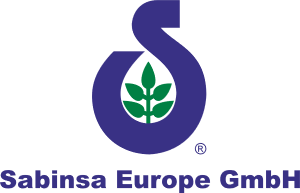“Normal inflammatory response is beneficial, notably when there is some sort of assault,” said Annie Eng, CEO of HP Ingredients. “Typically, inflammation plays a positive role in cases of microbial invasion and injuries. A type of white blood cell, macrophages, are the first inflammatory cells to respond to the invader or injury, and this is beneficial in the healing process.”
This type of inflammation is known as acute inflammation, and positively impacts health.
“However, inflammation can also be problematic when immune cells overreact and start harming the body’s own defense mechanism, which can result in some chronic diseases,” said Shaheen Majeed, president-worldwide, Sabinsa. This is known as chronic inflammation, and can lead to severe, negative health implications.
“During acute inflammatory conditions, the body releases inflammatory cytokines into the blood, or tissues, as part of the healing response,” Majeed explained. “However, with chronic inflammation, the very inflammatory cytokines behave destructively against normal cells—resulting in irritation and wear and tear of tissues throughout the body, thus leading to further inflammatory triggers. As a result, the body experiences changes in normal cellular function as well as abnormal healing process.”
Factors that can cause chronic inflammation vary, but include prolonged infections, smoking, stress, pollution or internal metabolic processes.
Several natural ingredients offer anti-inflammatory effects to benefit negative impacts of inflammation.
Research published in 2017 on Bacopa monnieri sought to understand Bacopa’s impact on inflammatory pathways in the brain, and found Bacopa inhibited the release of inflammatory cytokines from microglial cells, and also inhibited enzymes associated with inflammation in the brain.1
A specialty extract of Andrographis paniculate (standardized to andrographolide, 14 deoxyadngrographolide, and neo-andrographolide; as ParActin® from HP Ingredients) impacts inflammation via its effects on PPAR (peroxisome proliferator-activated receptor) gamma activation. This “effectively turns off the NF-kB ‘master power switch’—responsible for generating the over-reactive inflammatory response,” Eng explained. “By inactivating NF-kB, the hyper-expression of cytokines such as COX-2, PGE2, Interleukin-2 and Interferon gamma that causes pain and inflammation in the body are reduced.”
Inhibiting NF-kB activity and reducing its tendency to bind to DNA leads to a reduction in pro-inflammatory cytokines such as COX-2 and prostaglandins that causes inflammation “and thus, discomfort in the joints,” Eng said.
In a randomized, double-blind, placebo-controlled study published in Clinical Rheumatology, 60 individuals with compromised joints were given 100 mg ParActin or placebo three times per day for 14 weeks in conjunction with Methothrexate (MTX), the standard therapy for rheumatoid arthritis (RA).2 MTX can significantly improve the number of tender and swollen joints, pain and functional status, but can cause serious infection and liver damage with long-term use.
researchers associated these effects with the reduction of rheumatoid factor (RF), creatine kinase, IgA and IgM. The reduction in IgA and IgM is beneficial, as there is positive correlation between the grade of cartilage damage and decrease in RF.
In another human clinical trial published in Innovative Rheumatology, eight individuals with various rheumatoid conditions were given 300 mg of ParActin® daily for 4 years.3 Consumption of ParActin® showed significant improvement in number of swollen joints, total grade of swollen joint, total grade of tender joints, and improvement in quality of life.
In an animal study, researchers evaluated the anti-inflammatory effects of an ethanolic extract of Cissus quadrangularis in rats with paw edema induced via carrageenan injection.4 Oral administration of the Cissus quadrangularis extract suppressed the edematous response one hour after carrageenan injection, and lasting up to five hours, supporting its anti-inflammatory actions.
Methylsulfonylmethane (MSM, as OptiMSM® from Bergstrom Nutrition) reduced serum levels of inflammatory markers caused by strenuous exercise, according to a 2016 publication.5 Participants taking MSM showed lower serum levels of inflammatory markers post-exercise, reducing post-exercise immunosuppression.
Linda Doyle, senior vice president of global marketing, OmniActive Health Technologies, described ginger as an herbal ingredient with “a history of use in combatting many inflammatory conditions.”
Ginger’s anti-inflammatory effects were demonstrated in a study examining the link between inflammatory eicosanoids in the colon and colon cancer risk.6 For the study, 30 subjects were randomized to consume 2 g/d ginger or placebo for 28 days. Ginger reduced pro-inflammatory eicosanoids over the study period.
A double-blind, placebo-controlled, randomized trial showed 2 g ginger reduced muscle pain caused by eccentric exercise,7 while a review of seven published articles evaluating the ability of ginger to treat pain reported tentative support for the anti-inflammatory role of ginger constituents, “which may reduce the subjective experience of pain in some conditions such as osteoarthritis,” researchers concluded.8
“Despite ginger’s many benefits, high dosage quantities of 1,000 to 3,000 milligrams present manufacturing limitations to reach clinically effective doses and maintain consumer compliance, until now,” Doyle said, adding OmniActive’s Gingever™ is a high-potency extract containing 25 percent gingerols, “which reduces the dosage requirement to only 60 to 180 mg of Gingever to support a range of health benefits.”
Milk thistle extract (as MTE-066™ from Euromed USA) was studied to determine its anti-inflammatory and immunomodulatory activities in normal and HIV-infected immune cells by researchers at the University of Washington.9 As indicated by Euromed’s GM, Guy Woodman, scientists concluded, “The milk thistle extract appears to modulate multiple metabolic pathways that converge on suppressing inflammation in diverse immune cell types, independent of the inflammatory insult or stimulus.”
Pygeum africanum bark extract (as Prunera® from Euromed) “contains phytosterols that are known to have anti-inflammatory effects by inhibiting production of pro-inflammatory biochemicals (prostaglandins) in the prostate,” Woodman said. A new study awaiting publication supports the use of Prunera in formulations counteracting the enlargement of the prostate that occurs with aging. The study’s authors concluded, “This provides in-vitro evidence of the full anti-inflammatory potential of Pygeum—in general, there seemed to be a trend toward suppression of pro-inflammatory cytokines.”
One ingredient well supported by research for its anti-inflammatory effects is curcumin. Curcumin is a major constituent of turmeric (Curcuma longa), which has a long history of use in Ayurvedic medicine to treat inflammatory conditions.10
Curcumin impacts inflammation via several mechanisms. Curcumin:
- Modulates the inflammatory response by down-regulating the activity of cyclooxygenase-2 (COX-2), lipoxygenase and inducible nitric oxide synthase (iNOS) enzymes;
- Inhibits the production of the inflammatory cytokines tumor necrosis factor-alpha (TNF-a), interleukin (IL) -1, -2, -6, -8 and -12, monocyte chemoattractant protein (MCP), and migration inhibitory protein; and
- Down-regulates mitogen-activated and Janus kinases.11,12
Deanne Dolnick, science director, TR Nutritionals, pointed to a 2015 review evaluating the relationship between curcumin, inflammation and chronic disease. The impact of curcumin on several conditions, such as inflammatory bowel disease, pancreatitis, neurodegenerative and cardiovascular diseases, and others, was studied. Researchers concluded, “Curcumin has been demonstrated to have therapeutic potential for various chronic inflammatory diseases, essentially due to its anti-inflammatory and anti-oxidative properties against a vast array of molecular targets. A large body of investigation has provided important insights into the anti-inflammation effects of curcumin, which will constitute the basis for the further design and clinical application of extraordinarily potent drugs with potential therapeutic significance.”13
Alexis Manfré, health and nutrition category manager, Naturex, indicated turmeric extract for “reducing pain and inflammation and increasing mobility (using visual analog scales [VAS] or validated WOMAC score) in patients suffering from osteoarthritis.” Randomized, controlled trials have shown curcumin to be similarly efficacious and safe as ibuprofen for the treatment of knee osteoarthritis,14 to significantly improve clinical symptoms of osteoarthritis, including reducing blood serum markers of inflammation,15 improved VAS and WOMAC scores along with levels of biomarkers of inflammation and oxidative stress.16 Naturex offers Turmipure, Curcuma longa extract standardized to 95 percent of curcuminoids.
In a randomized, double-blind, placebo-controlled, parallel-group design trial, patients with metabolic syndrome were administered curcumin (as Curcumin C3 Complex® from Sabinsa) and a black pepper extract (as BioPerine® from Sabinsa, intended to enhance the bioavailability of curcumin) at a dose of 500 mg + 5 mg for 8 weeks.17 Results showed a significant reduction in serum concentrations of pro-inflammatory markers such as TNF-α, IL-6, TGF-β, and MCP-1 (p < 0.001).
Further, another randomized, double-blind, placebo-controlled, parallel-group trial studied the impact of curcuminoids on circulating biomarkers of systemic inflammation, including pro-inflammatory cytokines in subjects with mild-to-moderate knee osteoarthritis.18 For the study, patients received either curcumin (as Curcumin C3 Complex from Sabinsa [1500 mg/d in 3 divided doses]), or matched placebo for 6 weeks. At the end of the trial, a significant decline in serum concentration of IL-4, IL-6 and hs-CRP was seen in the treatment group. Additionally, 84 percent of subjects reported reduced use of naproxen in curcuminoids group, whereas only 19 percent subjects in placebo group reduced the use of this analgesic.
A combination of acetylated boswellic acids enriched with 10 percent acetyl-keto-boswellic acid (BosPure from DolCas Biotech LLC) and curcumin (BCM-95 from DolCas Biotech) was compared with the anti-inflammatory drug Celecoxib in the management of knee osteoarthritis in a human clinical study.19 Results showed administration of the combination (Rhulief™ from DolCas Biotech) at 500 mg twice daily was better than Celecoxib at 100 mg twice daily in symptom scoring and clinical examination, and was equally effective in alleviating crepitus and range of joint movements.
References:
- Nemetchek M et al. “The Ayurvedic plant Bacopa monnieri inhibits inflammatory pathways in the brain.” Journal of Ethnopharmacology. 2017:92-100.
- Burgos A et al. “Efficiacy of an Andrographis paniculate composition for the relief of rheumatoid arthritis symptoms: a prospective randomized placebo-controlled trial.” Clin Rheumatol. 2009;28:931-46.
- Hidalgo J et al. “Monotherapy with Paractin® for the symptomatic relief of different chronic rheumatoid conditions: A prospective case report and long term follow up.” Innovative Rheumatology. 2013. DOI: 10.5772/55642.
- Vijay P, Vijayvergia R. “Analgesic, anti-inflammatory and antipyretic activity of Cissus quadrangularis.” Journal of Pharmaceutical Sciences and Research. 2010;2(1):64-71.
- Van Der Merwe M, Bloomer RJ. “The Influence of Methylsulfonylmethane on Inflammation-Associated Cytokine Release before and following Strenuous Exercise.” J Sports Med. 2016;2016. DOI:10.1155/2016/7498359.
- Zick S et al. “Phase II Study of the Effects of Ginger Root Extract on Eicosanoids in Colon Mucosa in People at Normal Risk for Colorectal Cancer.” Cancer Prev Res. 2011;4(11):1929-37.
- Black CD et al. “Ginger (Zingiber officinale) reduces muscle pain caused by eccentric exercise.” J Pain. 2010;11(9):894-903.
- Terry R et al. “The Use of Ginger (Zingiber officinale) for the Treatment of Pain: A Systematic Review of Clinical Trials.” Pain Medicine. 2011;12(12):1808-18.
- Lovelace ES et al. “Silymarin suppresses basal and stimulus-induced activation, exhaustion, differentiation, and inflammatory markers in primary human immune cells.” PLoS ONE. 2017;12(2):e0171139. DOI:10.1371/journal.pone.0171139.
- Jurenka J. “Anti-inflammaotry properties of curcumin, a major constituent of Curcuma longa: A review of preclinical and clinical research.” Alternative Medicine Review. 2009;14(2):141-153.
- Goel A, Kunnumakkara AB, Aggarwal BB. “Curcumin as “curecumin”: from kitchen to clinic.” Biochem Pharmacol. 2008;75:787-809.
- Abe Y, Hashimoto S, Horie T. “Curcumin inhibition of inflammatory cytokine production by human peripheral blood monocytes and alveolar macrophages.” Pharmacol Res. 1999;39:41-47.
- He Y et al. “Curcumin, Inflammation, and Chronic Diseases: How Are They Linked?” Molecules. 2015;20:9183-9213.
- Kuptniratsaikul V at el. Efficacy and safety of Curcuma domestica extracts in patients with knee osteoarthritis. J Altern Complement Med. 2009 Aug;15(8):891-7.
- Rahimnia AR et al. “Impact of Supplementation with Curcuminoids on Systemic Inflammation in Patients with Knee Osteoarthritis: Findings from a Randomized Double-Blind Placebo-Controlled Trial.” Drug Res. 2015 Oct;65(10):521-5.
- Srivastava S et al. “Curcuma longa extract reduces inflammatory and oxidative stress biomarkers in osteoarthritis of knee: a four-month, double-blind, randomized, placebo-controlled trial.” Inflammopharmacology. 2016 Dec;24(6):377-388.
- Panahi Y et al. “Effects of curcumin on serum cytokine concentrations in subjects with metabolic syndrome: A post-hoc analysis of a randomized controlled trial.” Biomed Pharmacother. 2016 Aug;82:578-82.
- Rahimnia AR et al. “Impact of Supplementation with Curcuminoids on Systemic Inflammation in Patients with Knee Osteoarthritis: Findings from a Randomized Double-Blind Placebo-Controlled Trial.” Drug Res (Stuttg). 2015 Oct;65(10):521-5.
- Antony B et al. “Clinical Evaluation of a Herbal Formulation Rhulief™ in the Management of Knee Osteoarthritis.” Abstract 316. Osteoarthritis and Cartilage. 2011;19(S1)S145-S146.







